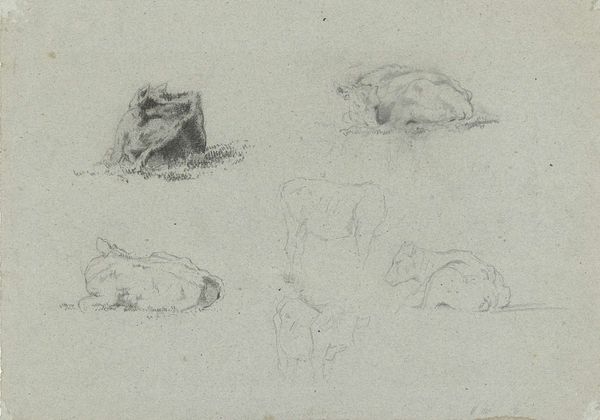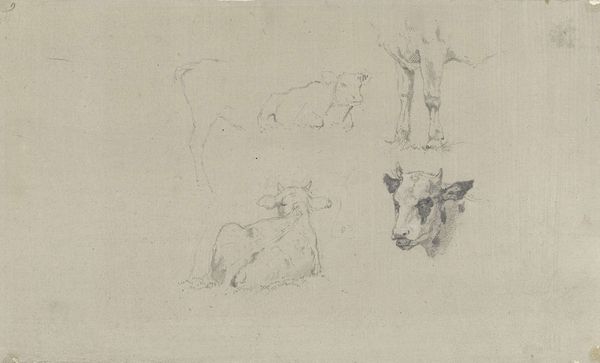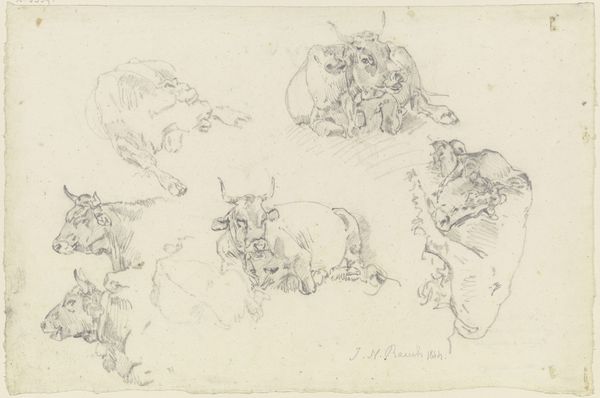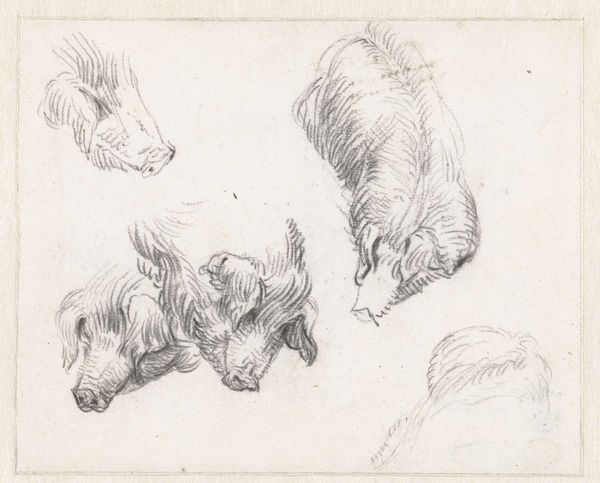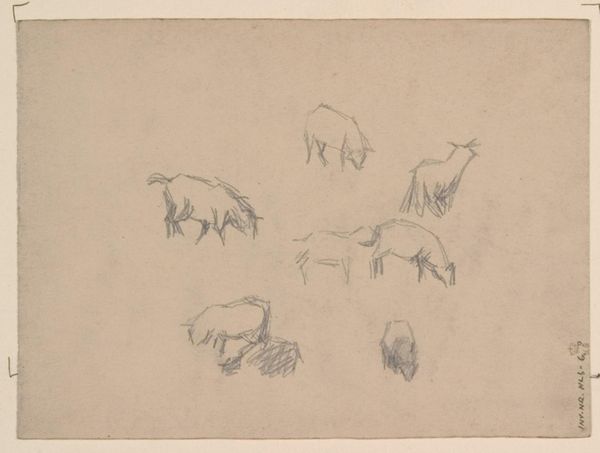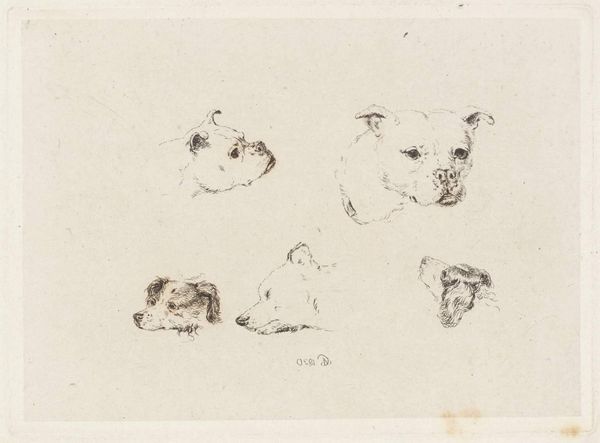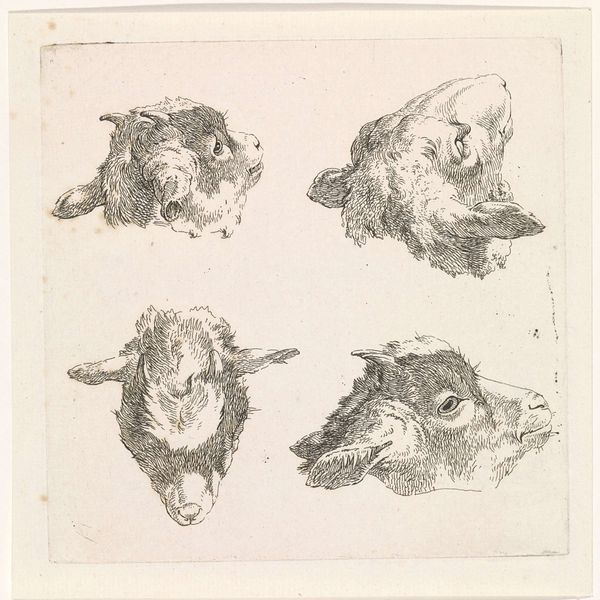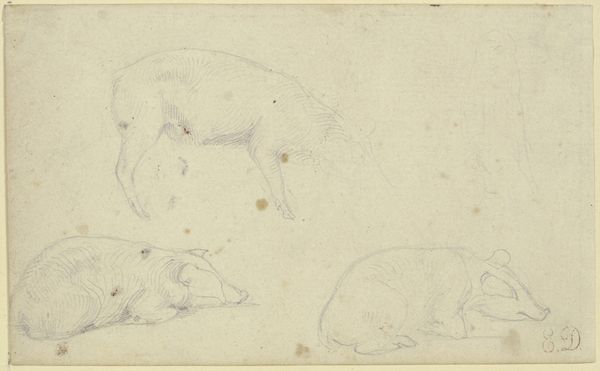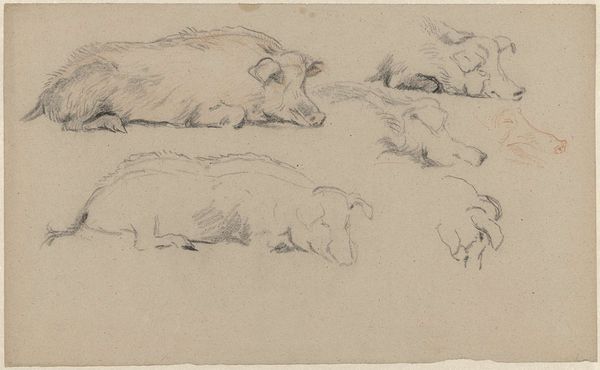
drawing, pencil
#
portrait
#
drawing
#
amateur sketch
#
light pencil work
#
pencil sketch
#
incomplete sketchy
#
landscape
#
personal sketchbook
#
idea generation sketch
#
sketchwork
#
detailed observational sketch
#
pencil
#
sketchbook drawing
#
academic-art
#
realism
#
initial sketch
Dimensions: height 195 mm, width 240 mm
Copyright: Rijks Museum: Open Domain
Curator: This pencil drawing is entitled *Studies van koeien,* or *Studies of Cows,* by Gerard Bilders, created sometime between 1848 and 1865. It’s currently held here at the Rijksmuseum. Editor: There’s something so gentle and restful about it. They seem almost like a study of slumber, these cows captured in such quiet, introspective poses. Curator: Bilders was certainly interested in capturing the pastoral. We have to remember that 19th-century Dutch painting was very concerned with idealizing rural life, a stark contrast to increasing industrialization and urbanization. It’s interesting how these cow studies play into that romanticism. Editor: Yes, and even the choice of medium adds to that feel. Pencil drawings like this tend to feel immediate, more personal, and, in this case, maybe even vulnerable. These weren’t meant for grand exhibitions, but rather reflect the intimate act of observing these animals in their environment. It feels almost… private. Curator: Absolutely. We also can't ignore the role agriculture plays in Dutch national identity. Depictions of cows, like these studies, represent not just the countryside, but also ideas around prosperity, the land, and a very specific vision of Dutchness that, naturally, isn’t neutral but politically constructed. Editor: You’re right to remind us of that inherent political lens. Looking closer, I notice how deliberately he avoids showing them as merely objects of utility. There's a tenderness, an acknowledgement of their presence. Could we see it as a proto-animal rights statement? Curator: It's an interesting interpretation, though probably a bit anachronistic to frame it fully in modern terms of animal rights. It's safer to suggest a subtle shift in how animals might be perceived and represented during the rise of artistic realism. Editor: Still, the act of dedicated observation, the subtle individualisation in each cow's pose and expression… it does humanize them, and, perhaps, opens up an important ethical dimension. Curator: Indeed, Bilders’ artwork provides a lens into 19th-century artistic concerns, as well as some quietly shifting attitudes toward rural life and, just possibly, how we perceive non-human creatures. Editor: I'll certainly leave here with a bit more appreciation for these beautifully rendered studies. The sketches remind us that art can come from seeing with kindness and curiosity.
Comments
No comments
Be the first to comment and join the conversation on the ultimate creative platform.
